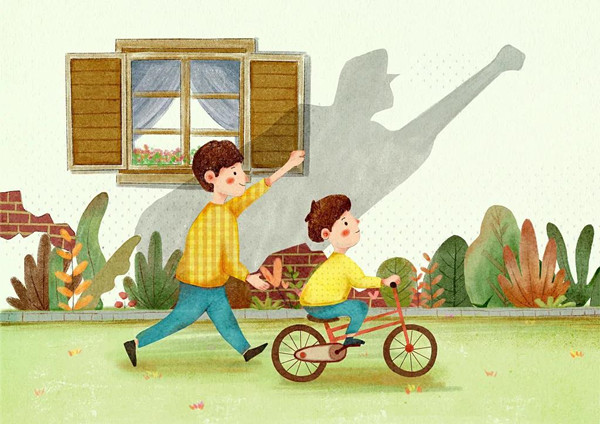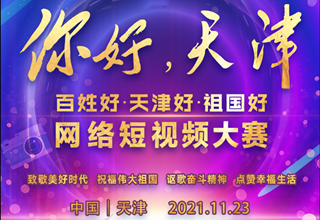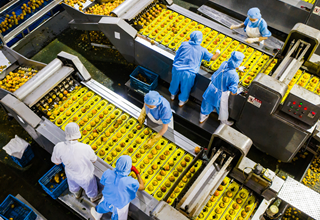Childhoods: a unique history of Tianjin

Childhood is a colourful painting of wonderful memories, a lively song with all laughter and no sighs, and a paper airplane heading all the way to the future... Generation after generation are characterized by its unique happy memory. The childhood memories of people from the post-80s to the post-90s are part of the history of this long-lived city, Tianjin.
"Shanhaiguan" is a must if post-80s in Tianjin are to picture their childhood. Hardly could a Tianjiner, on a hot summer, be restrained from grabbing a refreshing iced "Shanhaiguan", a treat that can be traced back to the beginning of the 20th century. In 1902, Wan Guo Mineral Water Company, the earliest carbonated drink company in China, was founded in the British concession in Tianjin by British merchants Mellors Sand and others. The company was renamed to Shanhaiguan Aerated Water Co., Ltd. This aerated drink was popular among the higher classes in Tianjin, and was even served at the wedding banquet of Puyi, the last emperor of the Qing Dynasty (1644-1911).
In 1949, the company got its name changed to Tianjin Shanhaiguan Aerated Water Factory, and was China's first state-owned enterprise to produce beverages. It developed Shanhaiguan Orange Soda, a juice-type aerated drink made completely of domestic ingredients. It was the first successful brand in China or even Asia to produce juice-typed aerated drinks.
In the 1980s a bowl of tea cost 0.02 yuan($0.31 cent) at most, while a bottle of Shanhaiguan ran 0.4 yuan. That's why drinking "Shanhaiguan" was a kind of showing off. Gulping down a bottle of iced "Shanhaiguan" was the happiest thing for a post-80s, for the refreshing joy would travel all around the body, dispelling all the unease about the heat. In that time without air conditioners, an iced "Shanhaiguan" was as close to a paradise Tianjin people could manage!
Despite the lack of varied entertainments, children born in the 1980s had fun in their own way. They expected every weekend to make a trip to Beining Park, which has a history going back to the Qing Dynasty and has undergone many re-constructions. The park has also survived as the city's biggest and most properly preserved public garden in modern history.
Beining Park was originally a plantation situated and constructed by Zhou Xuexi, according to Yuan Shikai's order. Its construction started in 1907, with its design originally modelling a royal palace and named "Jianshui Xuan" (a pavilion by the mirror-liked lake). In 1930, it was bought by the Railway Bureau of Beining and transformed into a park. It was given a new name, Ningyuan Park, based on a quotation from an ancient figure, Zhuge Liang. Ningyuan Park was the first park of the national railway system. Thus, it had at first been named "Beining Park" after the railway bureau it belonged to.
The most impressive part in the post-80s' memory must be the elephant slide and the giraffe slide. These two giant playmates, from a child's perspective, rule the kingdom of Beining Park. On a weekend trip to Beining Park with parents and friends, some wild slides on the "elephant" and the "giraffe" would light up the whole week yet to come.
When they were young, the post-90s generation saw a lot of new things. With the rapid development of the national economy, everyone's life was greatly improved. The post-90s children could have all kinds of novel toys. More importantly, they were able to attend a luxury activity that was previously only accessible to children from elite families — "learning a skill".
More and more parents began to realize the importance of education, and the slogan "Do not let our children lose at the starting line" was spreading among parents. In addition to improving their academic performance, many well-off parents planned to have the children adopt a new hobby. As a result, many post-90s children spent their weekends commuting between home and the Children's Palace. Those who were deeply influenced by Western culture preferred to let their children learn Western musical instruments such as piano, violin and cello, while parents who insisted on carrying forward traditional Chinese culture would choose to let their children learn guzheng (or Chinese zither) or erhu.
Other parents would let the children learn whatever they liked, such as classical ballet, painting, or how to calculate on an abacus. However, although ordinary people had become richer, they still could hardly afford these classes. At that point, parents started to have great expectation of their children, hoping that the money they invested in them would bring back the greatest value. Therefore, they not only closely supervised the children's practice, but also made their children perform musical instruments, dance, demonstrate cross talk or hosting and so on in front of all the relatives and friends at every Chinese New Year's gathering, and this is how many post-90s children had their first "stage experience".
The Children's Palace is the most desirable place for parents who hope their children will have a bright future. It originated from the Soviet Union, where it served to discover and cultivate outstanding students and provide extracurricular activities for schools. The Tianjin Children's Palace located on Dongma road in Nankai district has a history of more than 100 years, and is where generations of Tianjin children spent their golden youth. With the expectations of generations of parents, this palace produced a number of talents in literature, art and sports. In 1956, Tianjin rebuilt the site of the Young Men's Christian Association (YMCA) into the Tianjin Children's Palace, where the post-90s children gathered beautiful childhood memories as they learned a variety of skills, studied with friends, and wandered in the halls of art.

Copyright © Tianjin Municipal Government.
All rights reserved. Presented by China Daily.
京ICP备13028878号-35



